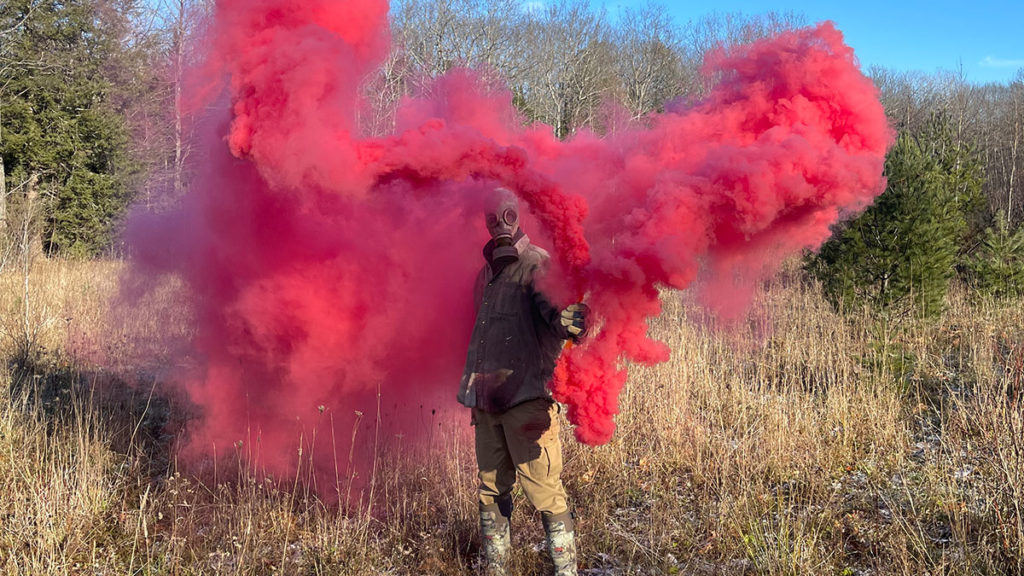
Conducting your own gas mask comparison can be a lengthy, confusing process. There are so many different types of gas masks on the market, all promising some unique advantage apart from the rest.
You will find prices range from the low end of around $30 (including carry bag) to some that approach $1,000! Sorting through the many options means becoming familiar with things like TIC/CWA contaminants, CBRN standards, etc.
Are your eyes gassing over?
The nuances might matter to fire departments, chemical spill response teams, hazmat units, etc. But, for the average prepper, you can group gas masks in three levels: basic, intermediate, and advanced.
If you conduct a Google search for “gas masks to buy” you are going to be flooded with countless ads. Companies are competing through Google AdWords to bid on these keywords so their product is front and center in your search results. Most of these masks are going to be higher-end masks. After all, if a company is bidding on keywords, they want sell a product with a high profit margin.
But does the average prepper need the highest-end gas mask available? Probably not.
In my gas mask comparison, I’m going to review what are probably the three most common gas masks the average prepper might consider buying. I’m leaving out mission-specific masks and the ultra-high-end gas masks that only billionaire preppers should buy.
If you have money to spare, you will be much better served spending that money on more filters than a super high-end mask. I believe I have stopped just short of super high-end with the MIRA.
Check out MIRA Safety and the CM-6M here.
Do Preppers Even Need a Gas Mask?
Gas masks have a history longer than you might think. Civilizations have needed them for thousands of years, but does that mean you need one?
“Need” is a relative term for most people, particularly preppers. We are accustomed to buying many products that we might not need now, but we buy them anyway because we might need them at some point. You really only ever need a gas mask when you actually need a gas mask.
The question is more around whether you should buy one in case you need one. The answer to that depends.
If you’re new to prepping and don’t have a month’s worth of food and water stored, you have no back up energy source, etc., then buying a gas mask is not a “need.” Focus on the basics first: beans, bullets, and bandages. However, if you are more of an intermediate or advanced prepper, there are solid arguments for adding a gas mask to your preps.
Industry Leaks. If you live near a chemical plant, nuclear reactor, etc., you face higher odds of needing a mask than other preppers. Modern nuclear facilities have serious safety measures in place, but mistakes happen. Chemical spills happen. Gas masks can help ensure survival.
Medical Care. If medical systems crumble and you are faced with a contagious, lethal disease, a gas mask could provide significant protection should you have to venture out near others or if you have to take care of the sick. In fact, doctors have been known to use military gas masks when performing tracheotomies on patients with COVID-19 and they were noted as being better for medical care when treating more aggressive viruses such as Ebola.
Smoke and Particles. Whether it’s living in area that frequently has wildfires or living under the falling ash of a recently-erupted volcano, air can become polluted in a big way very quickly. Having clean air to breathe in such situations can give you the time needed to reach safety.
Weapons of Mass Destruction. Chemical weapons are inexpensive and easily produced, making them attractive options for terrorists or nations wanting to inflict pain, suffering, and death on a population. Consider these examples (source):
- Modern chemical weapons took hold when during the German gas attack using chlorine on April 22, 1915 at Ypres, Belgium.
- Toxic chemicals including phosgene, sulfur mustard, and lewisites caused 100,000 deaths and 1.2 million casualties in World War I.
- Nazis used hydrogen cyanide gas during WWII to kill millions of innocent civilians.
- The use of an Iraqi nerve agent against Kurdish civilians in the 1980s led to around 5,000 deaths.
- There were sarin gas attacks in Japan in 1994 and 1995.
- The U.S. faced a wave of anthrax letters being sent to leaders after the September 11 terrorist attacks.
As you’ll see in the first two gas masks I review, they were designed for mass distribution to civilian populations. Thus, it’s easy to conclude that if foreign governments at the time deemed them necessary for civilian protection, it’s reasonable that preppers would want to own a few as well.
Gas Masks FAQs
Before we get started, let’s cover a few gas mask FAQs. The answers to these questions will help inform your decision making, and I reference some of the terms mentioned here in the review section.
What is a CBRN gas mask?
A CBRN gas mask is one designed to defend against chemical, biological, radiological, and nuclear (CBRN) threats. “CBRN” is the replacement for “NBC” (nuclear, biological, chemical) that was used more during the Cold War, which had replaced “ABC” (atomic, biological, and chemical). You’ll still see NBC mentioned a lot – same thing (more or less) as CBRN.
Note that full CBRN protection almost always means additional protective measures beyond the gas mask. This could include hazmat suits, decontamination units, etc. The Army even has soldiers who specialize in this.
What gas masks does the U.S. military use?
The U.S. military uses the Avon M50, which was developed specifically to meet NATA force’s military mask requirements. Masks of this type approach $500 and up in price. They are likely overkill for the typical prepper.
What are the civilian standards for gas mask design?
The National Institute for Occupational Safety and Health (NIOSH) is responsible for respirator standards. These standards were largely designed to assure first responders and others being thrown into harm’s way have the protection they need.
These standards include CBRN requirements. If you buy a mask with a CBRN rating, you should have all the mask you need to face 99% of all situations that might require a mask.
How long does a gas mask filter last?
Most gas mask filters on the market will last around 8 hours in a CBRN situation. Some special-purpose filters can last longer (such as chemical filters).
The latest iteration of the common Israeli 4A1 filter has an expiration date of 8 years after production date. The more advanced MIRA NATO filters have an expiration date of 20 years post production.
Always check the expiration date on your filter as materials degrade over time.
Gas Mask Comparison
My approach to this comparison is simple: research, physical inspection of each mask, and wear each while surrounding my face in smoke.
The smoke will come from Enola Gaye smoke grenades. These are wire-pull smoke bombs that are popular among photographers and people who play Airsoft.
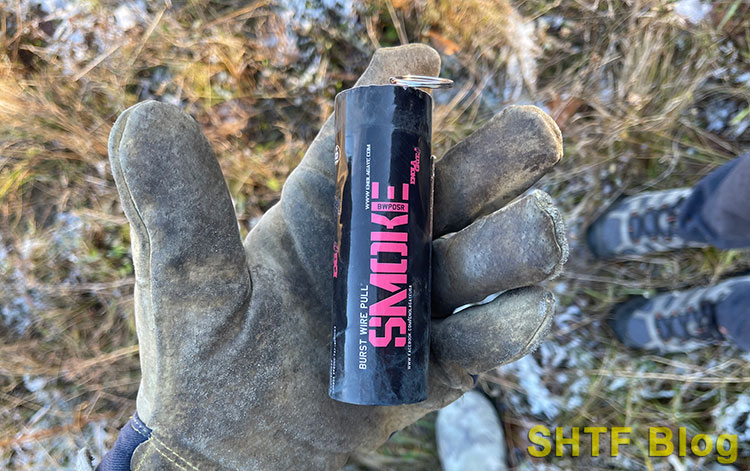
Warning: If you try this test at home, wear protective clothing. Smoke grenades burn hot.
Results
I compared the Soviet-era Russian civilian mask (basic), the Israeli citizen mask (intermediate), and the MIRA 6M (advanced).
| Gas Mask | 40mm Filter | Comfortable | Rubber Quality | Visibility | Accepts 2 Filters | Drinking System | Cost |
|---|---|---|---|---|---|---|---|
| Basic: Russian | Yes | No | Poor | Poor | No | No | $ |
| Intermediate: Israeli | Yes | Fair | Fair | Fair | No | Yes | $$ |
| Advanced: MIRA 6M | Yes | Yes | High | High | Yes | Yes | $$$ |
Pay Attention to the Filter
The most critical component of any gas mask is the filter itself. There are obvious differences between the actual masks themselves, and in the filters that accompany them on purchase, but they all take the standard 40mm gas mask filter.
The filter that came with the basic gas mask screwed into the intermediate gas masks whose filter screwed into the advanced gas mask. The filters are interchangeable so long as they’re all 40mm filters.
So, when you are selecting a gas mask to buy, look not just at the mask’s features, but also the filter that it comes with. Neither the Soviet mask nor the Israeli mask I reviewed came with the NATO-grade filter that the MIRA did. That doesn’t mean they’re worthless filters, they’re just not the best.
A Word About Water
Wear a gas mask in a dangerous environment long enough and eventually you’ll have to drink some water. How will you do that without taking your mask off and exposing yourself to toxic air? You need a built-in drinking system.
The Soviet-era mask does not contain a drinking system of any kind. Both the Israeli civilian and MIRA masks have built-in drinking systems that act similar to CamelBaks.
The user attaches the drinking hose to the outside of the mask on one end and to a special-designed plastic canteen on the other. There is a sipping device inside the mask which will then draw water up through the external hose.
Details – Basic, Intermediate, and Advanced
My comparison/review is by no means a scientific analysis. I bought these masks, inspected them, did online research, and took them out into the field (literally) to test them against smoke.
While not a laboratory analysis, I think the results of my comparison will hold sufficient information for the average prepper to buy the mask that suits them best. To that end, you’ll probably want to skip the first mask I reviewed…
Basic – Russian GP-5 Gas Mask
The GP-5 is the ubiquitous Soviet gas mask seen in so many Cold War pictures coming out of Eastern Europe. It’s been dubbed “the most popular gas mask in the world.” This “popularity” is a result of the quantity produced, not because of superior quality.
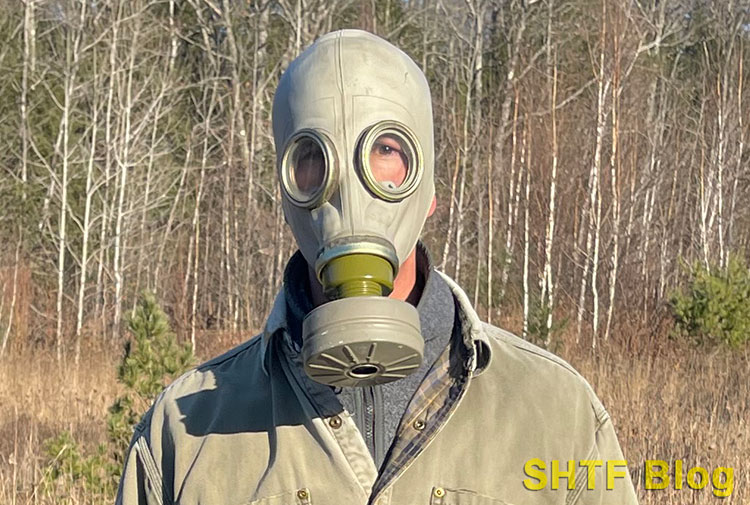
The GP-5 was produced in large quantities for the Soviet population starting in 1962 and ending in 1990. They were shipped far and wide, from East Germany to Cuba. Millions upon millions were produced. Because they produced so many for such a long period, these masks are plentiful at Army Navy surplus stores, on eBay, etc.
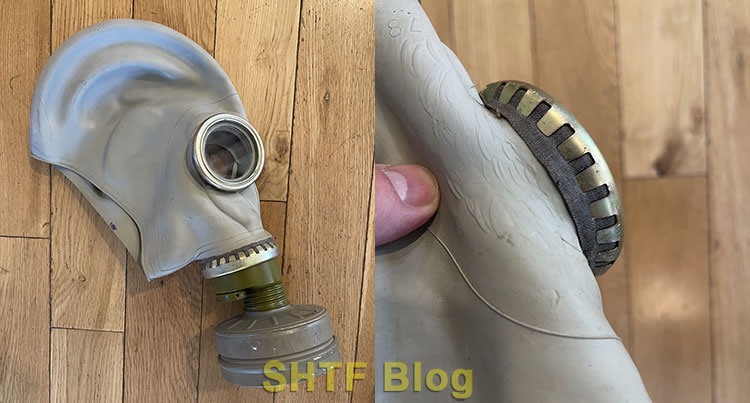
They use the standard 40mm filter. Most are shipped with a Type 80 NBC NATO filter canister.
The masks themselves are available in 5 sizes:
- 0 = X Small – 63cm
- 1 = Small – 63.5-66.5cm
- 2 = Medium – 66-68cm
- 3 = Large – 68.5-70.5cm
- 4 = X Large – 71cm
Designed primarily to protect the wearer from radioactive fallout, they were tested in Poland to determine if they have NBC protective capabilities. It was determined that they offer 24-hour protection in an NBC attack.
I wouldn’t want to put my life on the line with one of these masks, but they’re better than nothing if the need arose.
Pros and Cons
My favorite thing about this mask is just how creepy they are! They’re not as creepy as the Mickey Mouse gas mask from WWII, but creepy nonetheless. Unfortunately, the creep factor and the price (around $20 with filter) are where my likes end.
The mask is too old and too cheap to be reliably used in a SHTF situation. The mask certainly has a tight fit, but given that it’s not adjustable, putting it on is a real exercise in enduring face pain. It’s uncomfortable at best.
The eyepieces are crimped to the rubber and they are too small to allow decent visibility. The crimping also speaks to the expediate production – speed and low cost over quality.
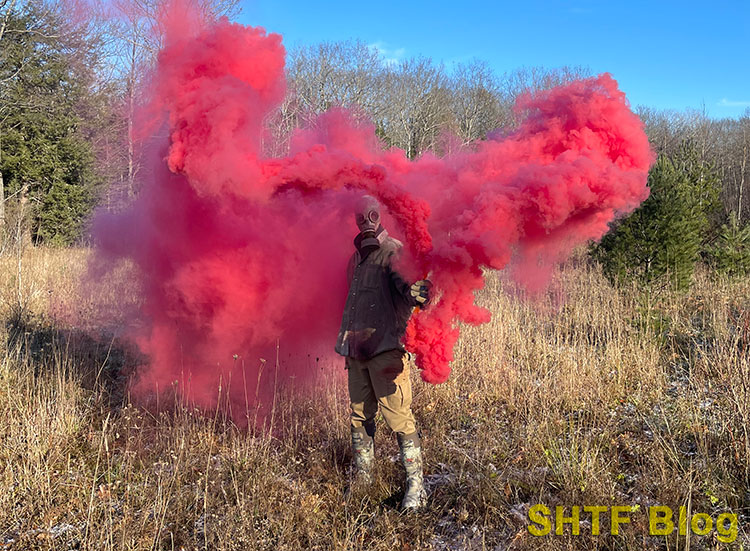
Verdict. This is not a mask I would recommend for anyone beyond those who need to satisfy a gas mask fetish or want a Halloween costume.
Warning: The original GP-5 gas mask came with a filter containing asbestos. Laboratory tests found the filter’s cotton layer contained 7.5% white asbestos. Be careful to make sure you have modern filters.
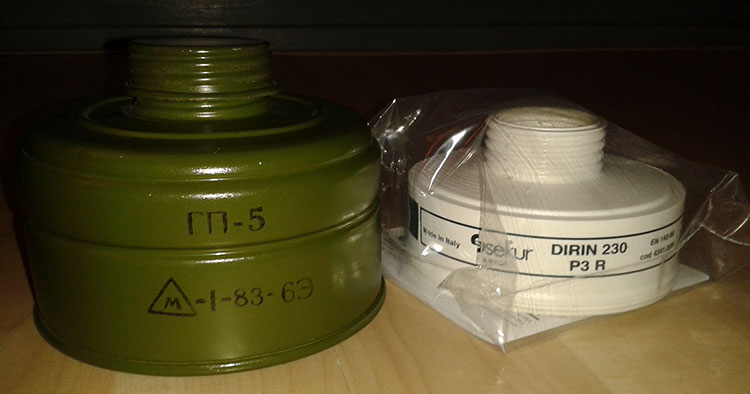
Intermediate – Israeli 4A1 Civilian Gas Mask
Like the GP-5, this Israeli civilian gas mask was issued by the Israeli Defense Force (IDF) to all Israeli citizens for use during an NBC attack. It is the civilian version of the IDF’s Israeli M15 mask. The mask was developed during the Gulf War and distributed to over 4 million Israelis.
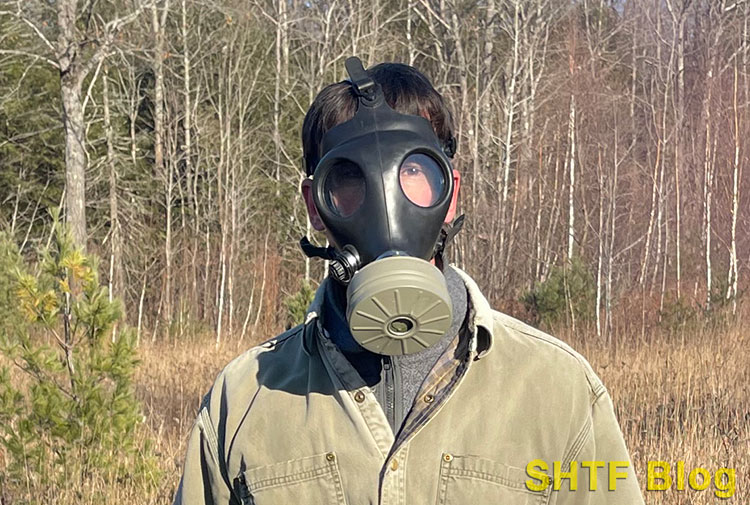
These masks also use the standard 40mm filter and most are shipped with a Type 80 NBC NATO filter canister. There are 4 known types of filters that have been issued with this mask over time:
- Brown – made in the 1990s
- Gray – made in 2003
- Tan – made in 2004
- Black – made in 2014.
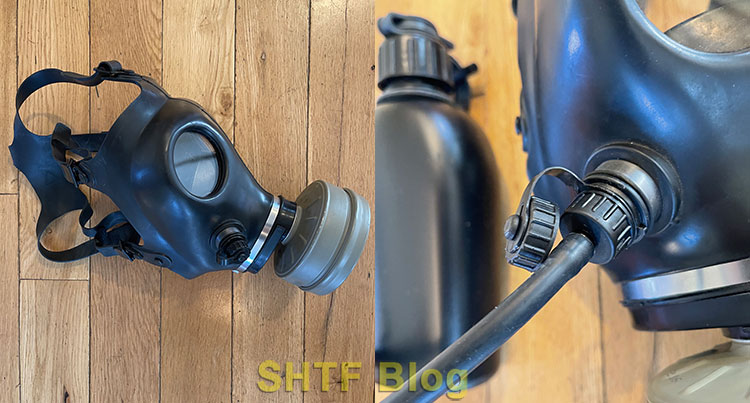
The Model 4A1 is a one-size-fits-all adult mask. In the same line of masks, the Model 10A1 was designed for children from age 8 to 13. Models 4 and 10 are the same as above but without the drinking system.
These masks can be found in surplus stores and online. They are reasonably priced (around $30 without a filter). They are considered outdated by modern gas mask manufacturers, but Israelis still use them in emergency situations.
- VARIETY OF USES- Israeli style full face respirator mask is best suited for cosplay masks, Halloween costumes, light industrial use, household chores, paintball, emergency preparedness, dust mask, prepper gear and supplies, survival kits, etc.
- UNIVERSAL FIT- The rubber respirator mask has 5 adjustable headstraps- one size fits all, from kids to adults. Includes a connection for 40mm filters (sold separate). Lenses made from clear, scratch-resistant plexiglass.
Note: The version of the 4A1 mask discussed does not meet the standards developed by NIOSH labs. You can find Israeli masks of this type that will, but expect to pay over $100 for one.
Pros and Cons
The adjustable head straps are a night and day improvement over the Russian GP-5. Putting the GP-5 on my head felt exceptionally claustrophobic. I eventually acclimated, but this Israeli mask was much better in that regard.
The eye pieces are about twice the size of the GP-5 which helped both improve visibility but also to reduce the feeling of claustrophobia. Still, there is limit visibility just the same.
The inclusion of a drinking system (that I did not test here) was another gigantic improvement over the Russian mask. Really, I don’t know how a mask could be considered suitable without such a system unless the intention was truly just to wear the mask for a few hours.
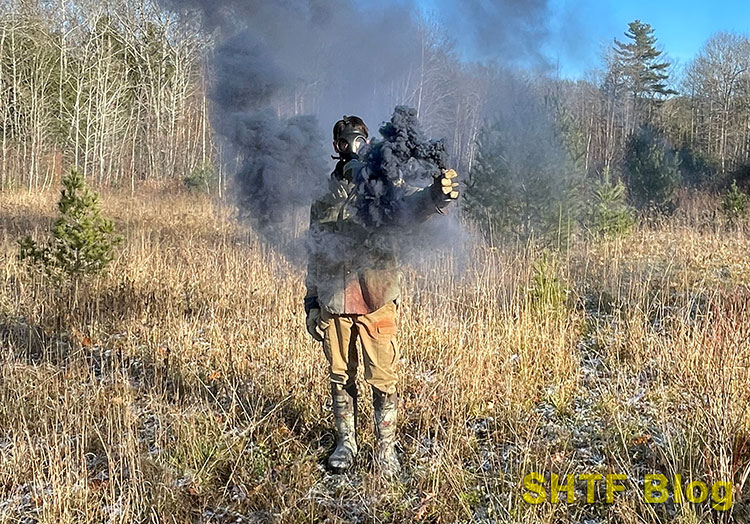
The price is right on this mask, but a good filter does not come cheap, and higher end masks come with higher end filters. So, if you’re looking at cost comparison, make sure it’s apples to apples. This mask may cost around $30 without a filter, but if you are buying a high end filter to go with it, the price difference closes with higher end masks. You can buy these masks with filters, but they are unlikely to be NATO-grade filters, which is what comes with more expensive masks.
Verdict. This is a suitable mask for general use in a crisis. Preppers can feel assured that they have added a layer of NBC protection when buying a mask of this type when paired with a quality filter.
Advanced – MIRA CM-6M Tactical Gas Mask
Anyone that knows anything about higher end gas masks knows the MIRA name. My MIRA CM-6M came directly from MIRA Safety. You aren’t going to find any Russian or Israeli civilian masks at their site. They only sell the best.
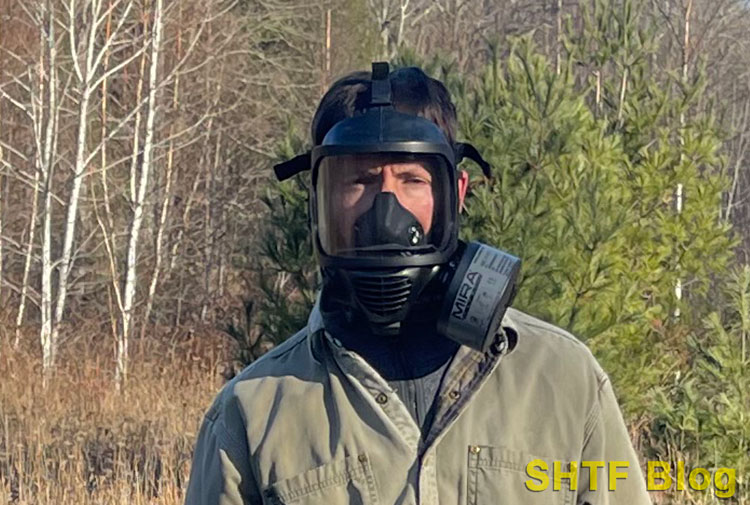
Check out MIRA Safety and the CM-6M here.
The quality difference with this mask is very clear when you hold it in your hand, let alone when you put it on your face. Construction is more solid. The mask has better craftsmanship in every way. It’s more comfortable to wear (by far) and the visibility is astounding.
Additional benefits:
- 20-year shelf life on the filter
- Compatible with 3M Safety 6878 Spectacle Kit
- Superior visibility with panoramic design visor
- Complies with EN 168 European standards for impact protection (riot control)
- Drinking system included
- Accepts two filters (if desired)
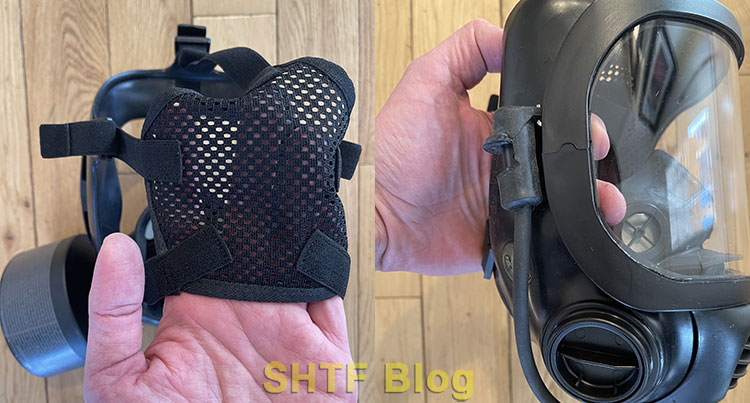
As I mentioned before, this mask comes with a high-end NATO-grade filter. The technical specifications will make your head spin. The list of particles and gases that it protects against is long and extensive (as in, virtually everything).
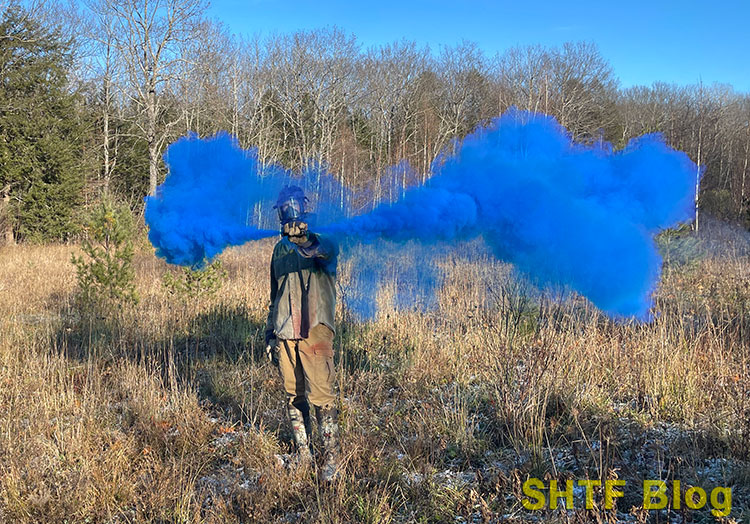
Verdict. This mask will cost much more than any surplus mask, but it’s also three times the mask. It is particularly well suited for any prepper who faces a higher risk of exposure to toxic air, and/or the prepper who has to bug out of a city and face a riot/crowd situation where the rigidity and stability of the mask matters.
Further, with a 20-year shelf life on the NATO filter that comes included, it makes a great gas mask for the “set it and forget it” approach to prepping that I like, similar to buying freeze-dried foods.
Gas Mask Accessories
No gas mask is complete without a few accessories. If you’re buying a high-end mask like the MIRA, odds are good that you’re all set. What you get in the package will meet your needs. However, there are some accessories worth considering.
Carry Bags
Not everyone is going to need a gas mask bag, but if you foresee carrying one as part of your kit, you need a place to store it. MIRA Safety offers a high-end mask bag that can be attached to a leg, chest rig, larger bag, etc.
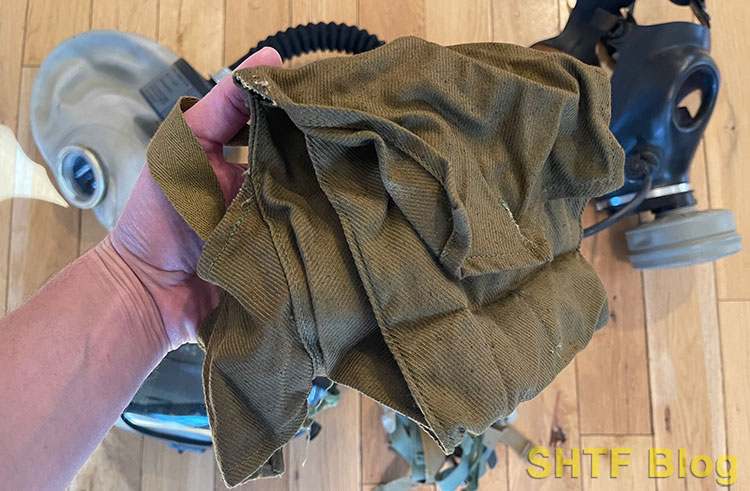
I would only recommend a mask bag for very few preppers, however. If you have limited funds, you are better off using a bag you already own and buying more filters instead.
Child Masks
Every family should have an adult gas mask (or two) on hand before buying a child’s mask. In an NBC scenario, if the adult is not left standing, the child is doomed. The adult is also the one who would be venturing out for supplies or help. You need an adult mask. A child mask is optional.
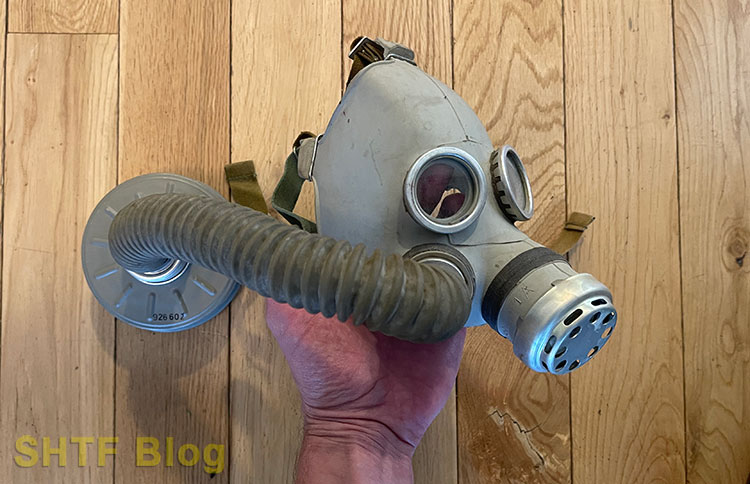
But once you have enough masks for every adult, then you can consider the children. Still, to invest the money into children’s masks, make sure your situation involves a higher level of NBC risk (living in an urban environment, chemical plants, etc.).
MIRA Safety sells far less scary, far more effective children’s masks, including systems for infants.
Extra Filters
This is the single most important “accessory” of any gas mask. Your mask is only lasts as long as the filter.
- FITS 40MM MASKS- Fits any standard 40mm fitting Industrial Use, Prepping, Welding, Painting, Emergency Mask, Halloween
- 1 PREMIUM BLACK FILTER- 40mm High Grade Premium Charcoal NEW Filter that can absorb various impurities
- MIRA Safety VK-450 Smoke/Carbon Monoxide Filter Cartridges
- Transform your gas mask into a reliable, fully-functioning, multi-use smoke hood with these VK-450 filters. Designed to overcome smoke & particulates (along with high concentrations of carbon monoxide), these advanced filters can provide crucial hours of protection and clean air from some of the most common disasters faced by US citizens.
Hoses
All of the masks here will accept the standard 40mm gas mask hose. For a few dollars more this allows for more flexibility when wearing a mask as the filter can be strapped to the user’s chest.
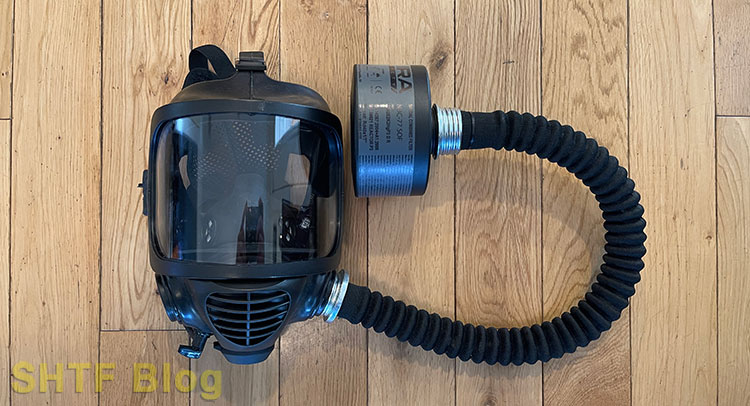
Most preppers will likely not need a gas mask hose, but it’s worth knowing about just in case your situation calls for one.
Summarized
Preppers should consider buying a gas mask, but only after higher priority preps (like food and water) are in place. A mask becomes a higher priority if you live in an area where nuclear, biological, or chemical exposure is abnormally high.
When you do decide to buy one, my advice is to skip the Soviet era mask entirely. For a few dollars more you can get the much better Israeli gas mask. For the highest end, most tactical masks, it’s hard to beat MIRA quality.
What are your gaseous thoughts on the matter? Let me know in the comments section.




